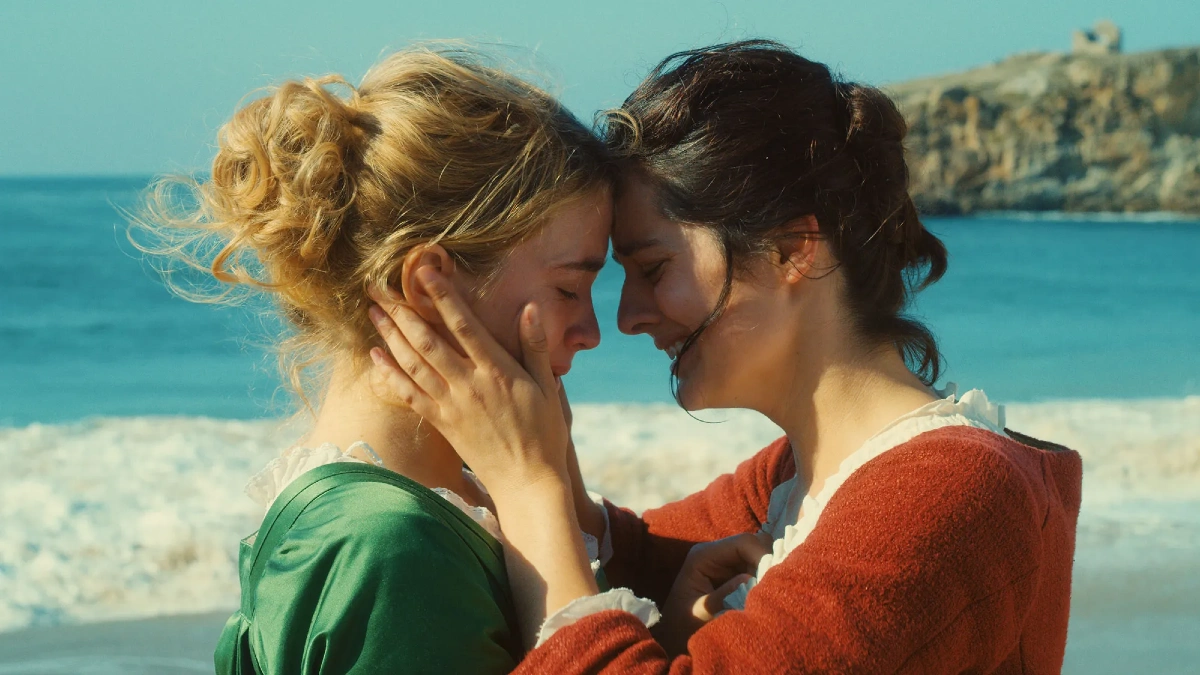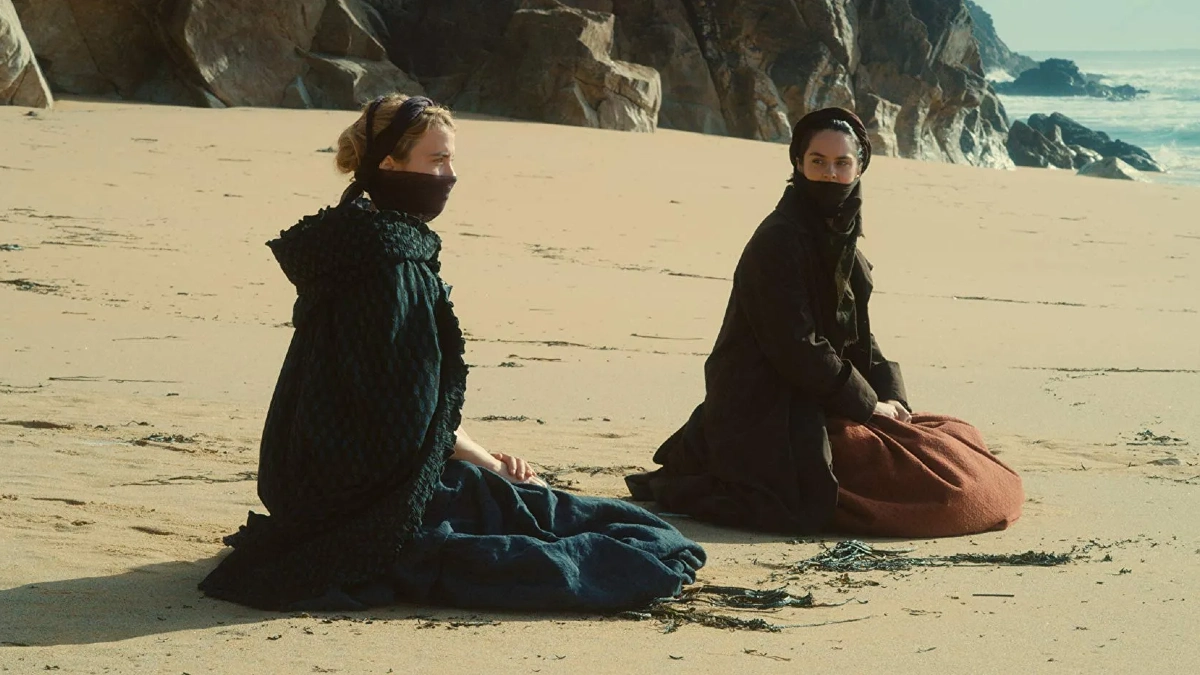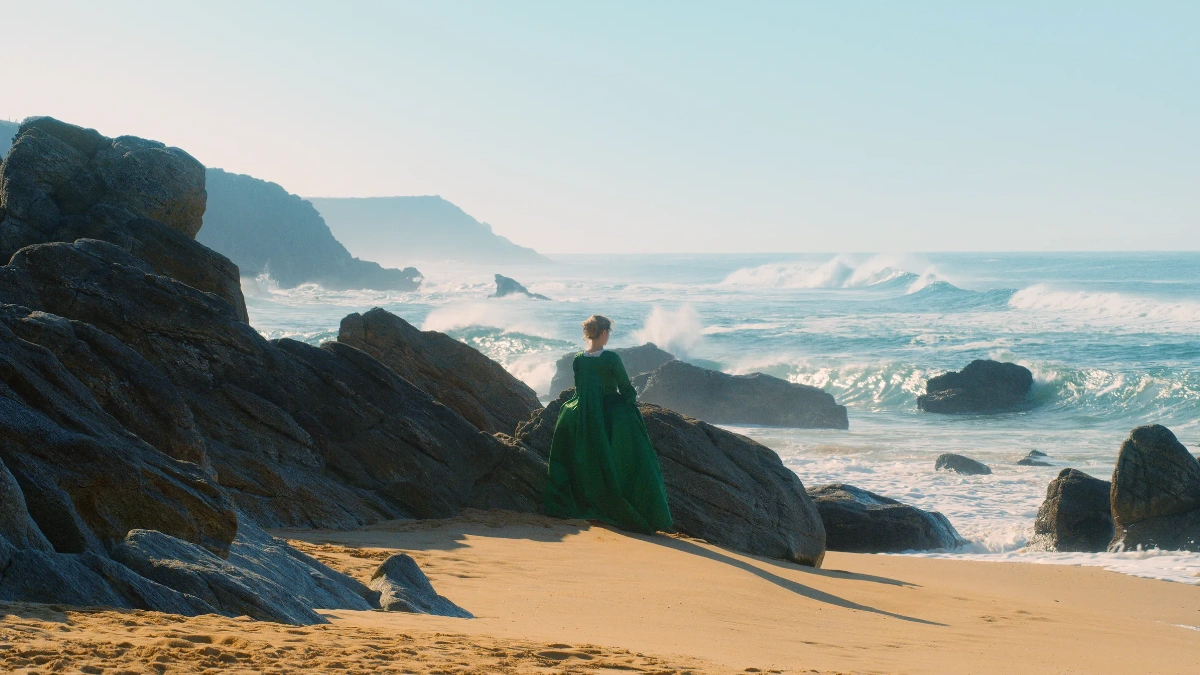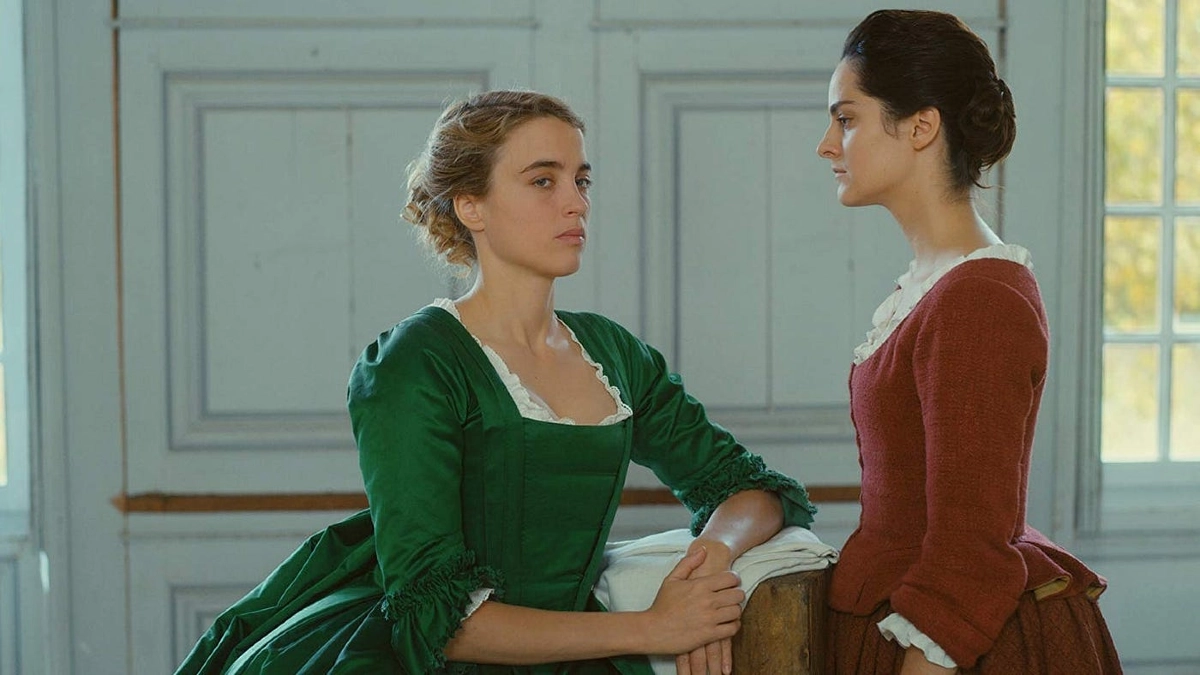‘Portrait of a Lady on Fire’ Review: We Don’t Regret, We Remember
Portrait of a Lady on Fire pulls you into a world in which each glance and each brushstroke is laden with the burdens of desire and loss.
2019 was such a remarkable year for filmmaking both financially and critically as we witnessed the year produce an unprecedented nine films that crossed the billion-dollar mark. By the end of that year, exciting box office hits had emerged along with modern classics that will be cherished and discussed for years to come such as Bong Joon-ho’s Parasite and Robert Eggers’ The Lighthouse. Most notable among these releases is the critically acclaimed French film Portrait of a Lady on Fire, which was awarded the Best Screenplay at the Cannes Film Festival that year and subsequently listed in Sight and Sound’s Top 100 Greatest Films in 2022, being the latest film entry into the publication’s stellar list. Teeming with exquisite artistry and a deeply felt exploration of love and memory, Portrait of a Lady on Fire pulls you into a world in which each glance and each brushstroke is laden with the burdens of desire and loss.

Céline Sciamma’s Portrait of a Lady on Fire features a remarkable artistry that guides us beyond the confines of a typical narrative. Set in the late 18th century, the story weaves in themes of love, desire, and the cruelty of memory through the artwork relationship of a painter and its subject. The acting, sound design, score, production design, and cinematography all come along together gorgeously to produce something that feels both intangibly ancient and deeply personal. And, as we look deeper into the precious layers of its meaning, we’ll find echoes in resonance with Orpheus and Eurydice’s tragic myth.
The film’s extraordinary cast is what brings the film alive, Noémie Merlant (TÁR, Lee) and Adèle Haenel (Water Lilies, Deerskin), as Marianne and Héloïse respectively, delivered a staggeringly compelling performance. Their romantic chemistry feels both timeless and profoundly intimate that transforms their characters from archetypes into fleshed-out people. Merlant commands Marianne’s role with a fragile strength, a woman torn between obligation and desire, while Haenel’s Héloïse delivers a similarly compelling performance as her internal struggles leaves an imprint in every glance and movement.
Even though this is my fourth time watching the film, my favorite part every time I rewatch it will always be the tension between Marianne and Héloïse, as it is most vividly represented in the stolen glances they exchanged, conveying a shared language of longing and desire without ever uttering a single word. Each sidelong glance is charged with an unspoken meaning that’s full of feelings and implications that captures the depth of their bond and the realities of society that separate them. The weight in their glances creates an almost palpable tension and allows for us to feel the weight of their growing attraction. In those looks — the way Marianne’s eyes seek Héloïse, or the way Heloïse’s gaze flickers with both curiosity and alarm; are vivid iterations of a love that excites and is illicit.

You can tell Sciamma draws every last drop of this from her characters, and the end result is something that feels poetic and searching for ways to express one’s painful and powerful vulnerability to the world. In this complex ‘pas de deux’ of glances and unspoken feelings, Sciamma builds a realm in which we as the audience are able to viscerally sense the tension and desire that entwine the pair — escalating the emotional stakes of their bond.
The sound design of the film is a phenomenal work of art in itself. The relative absence of a source of music creates an almost stifling silence in various scenes to enhance the tension and intimacy of the scenes with Marianne and Héloïse. This use of sound (or lack thereof) encourages the audience to lean in and listen carefully, which mirrors the characters’ own stillness and revelations.
When the score does come in — composed by Jean-Baptiste de Laubier, it adds an extra layer to an already fascinating picture. The music is undeniably eerie and yet faint, framing big moments without overshadowing them. It works almost as an onlooker; it hears our characters’ desperate for a connection and trying to escape their difficult realities. Every note feels like it’s in front of your temples, the way the pair will feel the precious freshness of the time doing the same to their spirits but most of all their memories together whilst like a Lovecraftian creation, is tested to fall apart with increasing trepidation.

The production design of Portrait of a Lady on Fire is simply breathtaking that immerses audiences in a distinct feeling of a lonely coast of France. The textures and colors in the interiors of the grand manor hold deep significance and comment on the emotional and psychological status of the characters. The symbolism of the objects used to decorate the set are careful and intentional, from the flickering swing of the candle to the drifting fabric the two women adorn, comes together in a visual representation of beauty and existence explored in the film.
The colors in every frame looked like they are crafted through a painting lens, inviting comparisons to the very arts that the film seeks to replicate. The palette of the repeated lush greens, rosé red, dark blues, and earth-toned cream evokes elements of place while also conveying intimacy involved in the story. Sciamma, in collaboration with production designer, Thomas Grézaud, layered the sets with delicate importance; each decor feels as if we’ve existed in that time and is graciously experiencing them in the present. The detail in design invokes life to the film as if every frame were a carefully composed painting, condensed in time, flaunting image unto motion.
The cinematography by Claire Mathon is a resounding triumph that catapults the film into visual oblivion; every scene showcases a deliberate and stunning shot that evokes classical paintings, which not only relates the film to artistic themes, but also deepens the emotional connection and disconnection of the characters. The utilization of natural light throughout the film contributes to this emotional depth. Scenes burst with love’s ephemeral qualities that imbue a sense of glimmer and hope.

Mathon’s framing is especially astonishing. Close-ups of the characters’ faces convey emotional nuance and wider shots like Héloïse standing along the shore watching the seas showcase isolation and longing. Framing is nowhere more evident in the careful choreography of physicality — how and when Marianne circles Héloïse as she paints, or when the two women hang glances are choreographically well developed. The film creates a rhythm and dialogue from this choreography as it mirrors disconnection and connection. Each frame is like a brushstroke of one’s life in that it captures a moment in time, a virtuous story, sentiment, and contemplation.
At its most essential level, the film is a meditation on memory and desire, themes which are similarly reflected in the myth of Orpheus and Eurydice. In that story, Orpheus descends to the Underworld to reclaim his beloved Eurydice, which reflects the active construction of love at the heart of Marianne and Héloïse’s story — love is centrally represented as passionate, tender, but is ultimately doomed. Just as Orpheus’s song has the ability to transcend barriers, so too, the act of painting itself allows for a connection that exists between Marianne and Héloïse.
The film also suggests a two-way experience of seeing and being seen. Being the painter means that Marianne is privileged to intimately understand Héloïse not only for someone’s paintings but also for who she is. Once again, as with Orpheus’s song, the film gestures towards the power of art, the ability of art to heal (even the hardest of hearts). Marianne and Héloïse’s relationship is a romance that is primarily constructed — creation lies in the center of their love, and in this, there exists both beauty and tragedy.

As the relationship develops, the transience of love, one of the major themes of the film, becomes apparent. During the final scene of the film, an inevitable feeling of heartache washes Marianne as she watches over Héloïse, similar to the feeling of losing Eurydice. Just as Orpheus must ultimately lose Eurydice, and as tied to the inevitability of love, Marianne and Héloïse will ultimately part ways, and we must grapple with the sad but beautiful contradictions of their story.
Portrait of a Lady on Fire is a breathtaking film that explores love and loss in an unprecedented way. The casts, particularly, Merlant and Haenel both delivered a spellbinding performance, with the sound editing and score enhancing the emotional resonance of the film. Those components, along with a satisfying level of production design and cinematography, create a visual experience that captures the spirit of the film and adds layers to its depth.
Sciamma’s fearless direction makes sure that every piece goes toward a meaningful exploration of desire and loss, connecting the narrative to the story of Orpheus and Eurydice, which broadens its scope, depth, and resonance. Each frame of Portrait of a Lady on Fire is its own painting, and there is power in art to capture a temporal experience of life and love. It is a film that resonates the heart long after the credits cut — a lasting achievement and deserving of a place in the pantheon of cinema and art.

Portrait of a Lady on Fire is written and directed by Céline Sciamma, the film stars Noémie Merlant, Adèle Haenel, Luàna Bajrami, and Valeria Golino. Portrait of a Lady on Fire celebrates its fifth anniversary this year.












